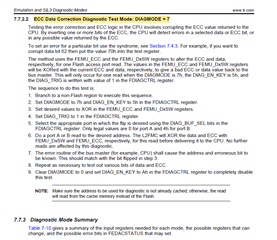Tool/software:
Hello, I want to intentionally corrupt a few sectors in flash bank 7 for testing purposes. Therefore, I performed a write operation that fills a sector continuously for about 5 days. After each write operation, I move to a new sector, allowing me to continuously fill and erase the sectors. Despite the long duration, no corruption occurred in flash bank 7. Approximately 300,000 write/erase cycles have been completed. The only issue I can currently observe is that the write/erase operations take much longer than usual after 100,000 cycles. What method can I use to corrupt the bits, pages, or sectors in this area?


